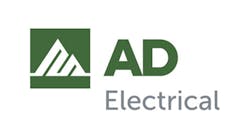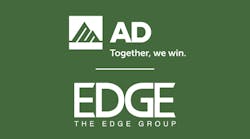Charlotte continues to cash in on construction in the financial sector, but the largest city in North Carolina is singing the homebuilding blues like the rest of the country.
The city is seeing unprecedented growth and construction cranes pierce the skies over downtown Charlotte, according to reps and distributors in the area. Office construction is particularly strong, and with its 2.3 percent office-vacancy rate, Charlotte boasts one of the healthiest office-construction markets in the United States.
“We are undergoing unprecedented growth and expansion and kind of an explosion,” says Brent Spear, president, Electrical Distributors Inc., Charlotte, a distributor with six branches throughout the city and the surrounding area. He says the growth trends for most distributors and most construction-oriented companies are very good right now versus one-to-two years ago.
Located 256 miles northwest of Atlanta, Charlotte has emerged over the past few decades as one of the largest cities in the Southeast. With more than 2 million residents in the Charlotte-Gastonia-Salisbury metropolitan statistical area (MSA), only the Miami, Atlanta and Tampa Bay MSAs are larger. Reps covering the Charlotte territory treat Charlotte, Greensboro and Raleigh/Durham as three distinct markets. “We handle these markets with three different outside salesmen,” says Ken McBrayer, principal of Fox-Rowden-McBrayer Inc., Charlotte. “They are certainly separate trading areas, but not nearly as ‘cliquish’ as in former years. Consolidation of distribution and contractors has had its impact to force change. Also, the pick of business isn't as big a factor as in former decades.”
From its beginnings as a small village, Charlotte quickly attained city status with the discovery of gold in 1799. This was also the first small step in establishing the city as a financial center and the gold mining capital of the country, until the California Gold Rush 50 years later. The city evolved into a textile center, and has grown to become a financial, distribution and transportation center for the region. Today, Charlotte is a major distribution hub and is at the center of the largest consolidated rail system in the United States. The city ranks sixth nationally in total wholesale sales.
With more than $2 trillion in banking assets, Charlotte is the second largest financial center in the nation, behind only New York. Two of the nation's largest banks, Bank of America and Wachovia, are headquartered in Charlotte. In fact, the city is home to 20 banks with more than 229 local branches and a Federal Reserve Bank.
“The big banks have by far been the drivers behind this region's growth,” says McBrayer. “The bank leadership has been committed to this area and fueled the uptown development. There are more cranes in uptown Charlotte today than at any time in the past 25 years I've been here. Currently, both Bank of America and Wachovia have new office space under construction, and Bank of America has a Ritz Carlton attached to their space.”
Adds Philip Hedrick of Electri-Products Group Inc., a manufacturers' rep in Greensboro, N.C. with a branch in Charlotte, “Charlotte has been very fortunate due to the banking industry and relocation to the area. This has provided new construction nonstop in housing, schools, churches, retail, roads, office complexes, professional sporting facilities, airport expansions and many other areas.”
One of the largest projects downtown is the NASCAR Hall of Fame. This multi-million dollar museum and tower is scheduled to open in 2010. Graybar says it's currently involved in negotiations on the electrical and data communications packages for the project. Mid-rise to high-rise residential condominium construction is also booming downtown. Eight large luxury condo projects are moving and four more are in the planning stages, says Samuel Johnson, president, Farmer Electrical Sales Inc., a manufacturers' rep headquartered in Greensboro, N.C.
Spear says the reason for so much activity is that a lot of projects hit the marketplace at the same time. “A year ago, an awful lot of stuff was in plans and you may have started breaking ground,” he says. “But now the cranes literally in the last year have multiplied exponentially.”
Still, caution is in the air because of the current subprime financial situation and uncertainty in the banking industry. The sudden departure earlier this year of Ken Thompson, Wachovia's chief executive, has created anxiety about Wachovia's future in Charlotte, but the company says its Wachovia Corporate Center under construction in downtown Charlotte is moving forward as scheduled. The bank tower is 48 stories, with 1.57 million square feet. Wachovia will take up about half of the space in its tower and has signed up tenants such as Duke Energy Corp. One area distributor said that if the subprime crisis had happened two years ago, many of these construction projects would have been put on hold and Charlotte wouldn't be enjoying all of the current construction activity.
Fastest-growing areas of town
The fast growth is occurring north and south of the city and along the south corridor of I-77, according to Graybar's Charlotte branch managers. The construction of I-485, an Interstate loop around Charlotte, is also attracting people who want better access to the city, they say. Construction projects include businesses, offices, residential neighborhoods, big-box stores, other retailers and the necessary infrastructure to support the growth.
The section of the city known as “uptown” is currently undergoing a $3 billion expansion scheduled for completion in the next five to 10 years, says Graybar Electric Co.'s Charlotte Comm/Data Branch Manager Greg Hochheiser and Charlotte Electrical Branch Manager Glenn McCarter. The Charlotte Knights minor-league baseball team is scheduled to relocate to the uptown neighborhood within the next two to three years, bringing the potential for a new stadium and entertainment complex, say Graybar's Charlotte branch managers. Additionally, pending hospital expansions include Carolinas Medical and Presbyterian Healthcare. Duke Energy is planning to build power plants in the coming years to support the increasing energy needs of Charlotte and the surrounding area. According to the website for Charlotte Center City Partners, the Charlotte uptown region's 1.2 percent vacancy rate ranks as the lowest office vacancy rate in the country.
Other popular areas of the city are the university area, Ballentyne and Southpark, says McBrayer of Fox-Rowden-McBrayer Inc. “Residential also flows into South Carolina as the border is so close and the tax base is much lower.” South Charlotte has become a very popular area of Charlotte because of the development of Ballantyne, says Hedrick of Electri-Products Group.
One city in the Charlotte-Gastonia-Salisbury MSA growing rapidly is Kannapolis, located in the I-85 corridor north of Charlotte, on the western side of Cabarrus County and the southern end of Rowan County. Cabarrus County was ranked as one of the 10 to 15 fastest-growing counties in the nation until a year or two ago, says Spear of Electrical Distributors Inc. Because of all this growth, Spear says Kannapolis faces growth challenges and that there are frequent discussions about moratoriums on building.
At one time, Kannapolis was a traditional mill village that surrounded Cannon Mills. Cannon Mills, once the world leader in the manufacturing of home textile products, became Fieldcrest Cannon and later Pillowtex Corp. Pillowtex Corp. closed in July 2003. Today, the city of 39,000 residents is home to companies such as Shoe Show, Stanley Works, K-Town Furniture, and Novant Health.
One of the biggest projects in Kannapolis is The North Carolina Research Campus, a joint venture between Dole Foods, Duke University and the University of North Carolina. The campus is built on the site of a former textile mill. David Murdock, CEO of Dole Foods, Castle & Cooke, and former owner of Cannon Mills, is spearheading the development of the complex. His total investment is projected at $1 billion for research facilities, office space, town homes and retail. The UNC institutions in the project will then fund and operate their individual programs. The major components of the campus include the Dole-NC State Institute for Advanced Fruit and Vegetable Science; the UNC Center for Excellence in Nutrition; a science boarding school for girls directed by UNC Charlotte; Dole Analytical Laboratory; a fermentation facility; and an incubator for start-up firms. Laboratory Corp. of America (LabCorp.) will also establish a major presence within the development. Duke University will also locate its Institute for Translational Medicine to the North Carolina Research Campus. In addition to the Institute, Duke scientists will also run the Core Lab.
The housing sector
Like the rest of the country, the housing market in Charlotte has softened. Homebuilders that focus on custom homes are doing alright, says Spear. “They are feeling less of the pressure. The ones that are the lower end of the spectrum, which is where a lot of the subprime mess hit anyway, probably suffered the most. A lot of the big national or regional builders have had to severely cut back, maybe 30 to 70 percent building activity versus a year ago.”
Charlotte is one of the few, if not the only major metropolitan area where home values have not declined. Starts are off, but are not dead, says McBrayer of Fox-Rowden-McBrayer Inc. The residential market is slowing down, and many of the residential contractors are switching from building single-family homes to apartments, say Graybar's Charlotte branch managers.
“Multi-family dwellings are still in demand due to a young demographic group that's relocating to Charlotte for an abundance of jobs,” they said. “In addition, the tight credit market is forcing those who might want to build single-family homes to rent for the time being.”
Johnson of Farmer Electrical Sales says lower-end and tract homes have been the most negatively affected by the housing situation in Charlotte. “Upper-end homes and retirement complexes have not been hit as hard so far, with the Floridians, Midwesterners and New Englanders heading in the direction of the Carolinas.”
Changes in the electrical distribution market
“In recent years, the Charlotte market has experienced significant consolidation among electrical distributors,” say Graybar's Charlotte branch managers. “Some of the local distributors have been acquired by the large national and international electrical distributors, which certainly changes the competitive landscape.”
Adds Sam Johnson, president, Farmer Electrical Sales Inc., Greensboro, N.C., “World Electric (Sonepar) has come into Charlotte recently to challenge the market leaders in commercial (HD Supply, Electrical Distributors Inc. and Graybar),” says Johnson. “McNaughton-McKay Electric and Bryant Supply (now Hagemeyer) tend to focus on the industrial and OEM markets and lead there.”
Herm Isenstein, president, DISC Corp., Orange, Conn., forecasts that electrical distributors in the Charlotte metropolitan area sold approximately $573 million in electrical products in 2007. Total sales for the metro area were up 7.5 percent from the year before. DISC Corp. expects the Charlotte metro area to decrease 3.7 percent in 2008, with weakness in the distributor-served contractor and industrial markets.
Graybar's Charlotte branch managers believe that 2008 will continue to be a strong year for the electrical and data communications market, while 2009 will present opportunities for market share expansion, especially in the government and security markets. They see significant growth in demand for low-voltage systems, data-center solutions, lighting retrofits and green products.
Looking out a year from now, Spear says it's an uncertain picture. While many big projects are underway right now, he says within a year many of them will be completed. “They are large enough in scale that you don't have these things here every year,” he says. “Normally, every two or three years you get a big one. We have had five or six big ones in a year. Then what happens next year?,” he says.
While he is uncertain about the future construction climate, Spear says Charlotte still has plenty going for it because it's home to a growing number of Fortune 500 companies. While banks continue to be a big driver for the area, he says Charlotte's economy continues to diversify.








